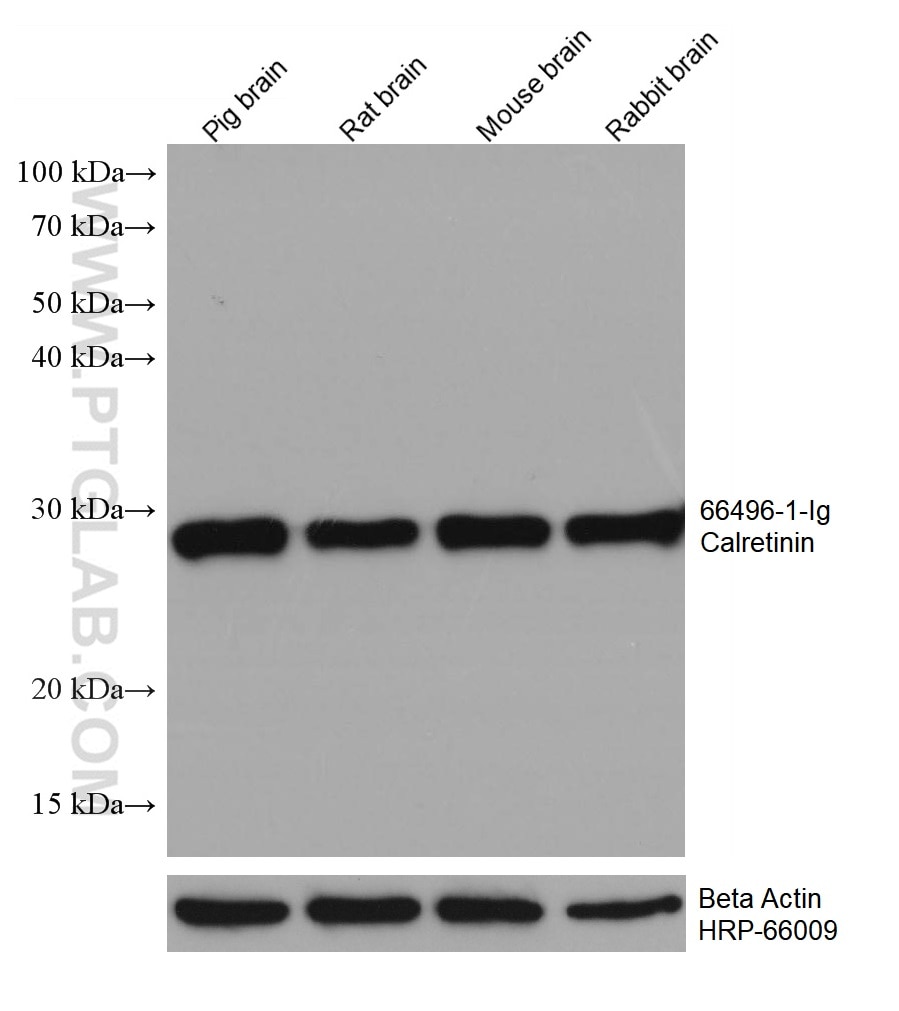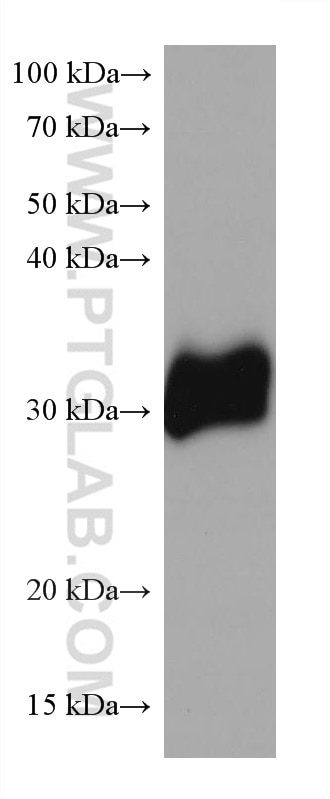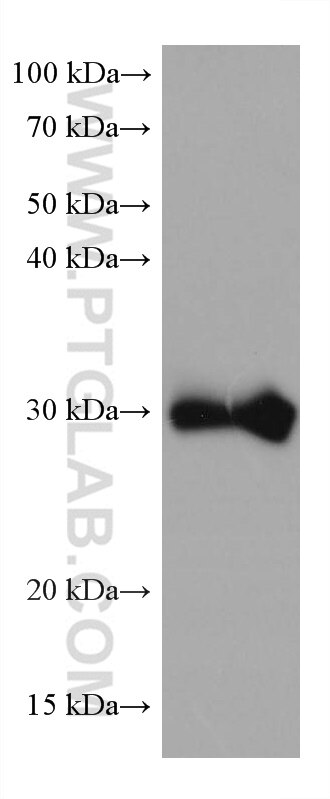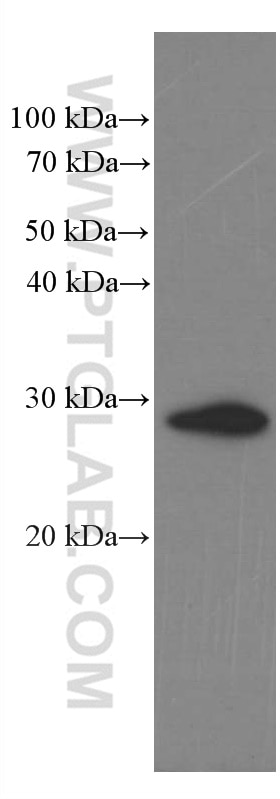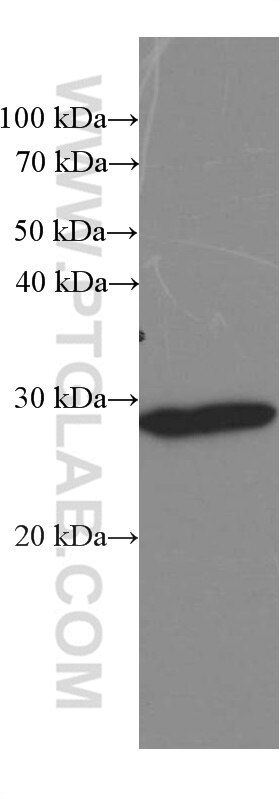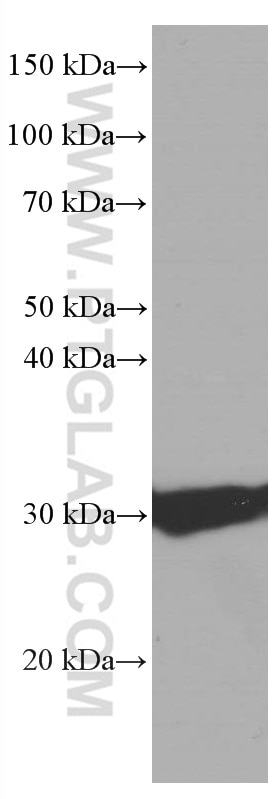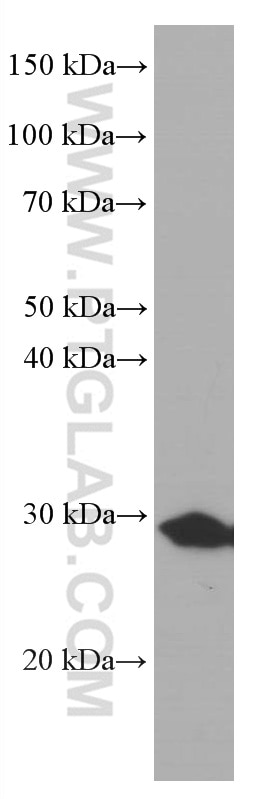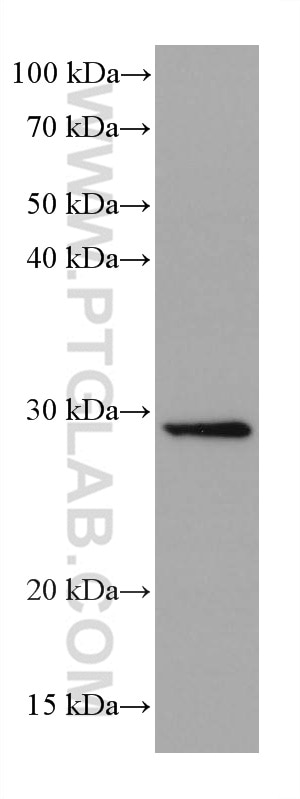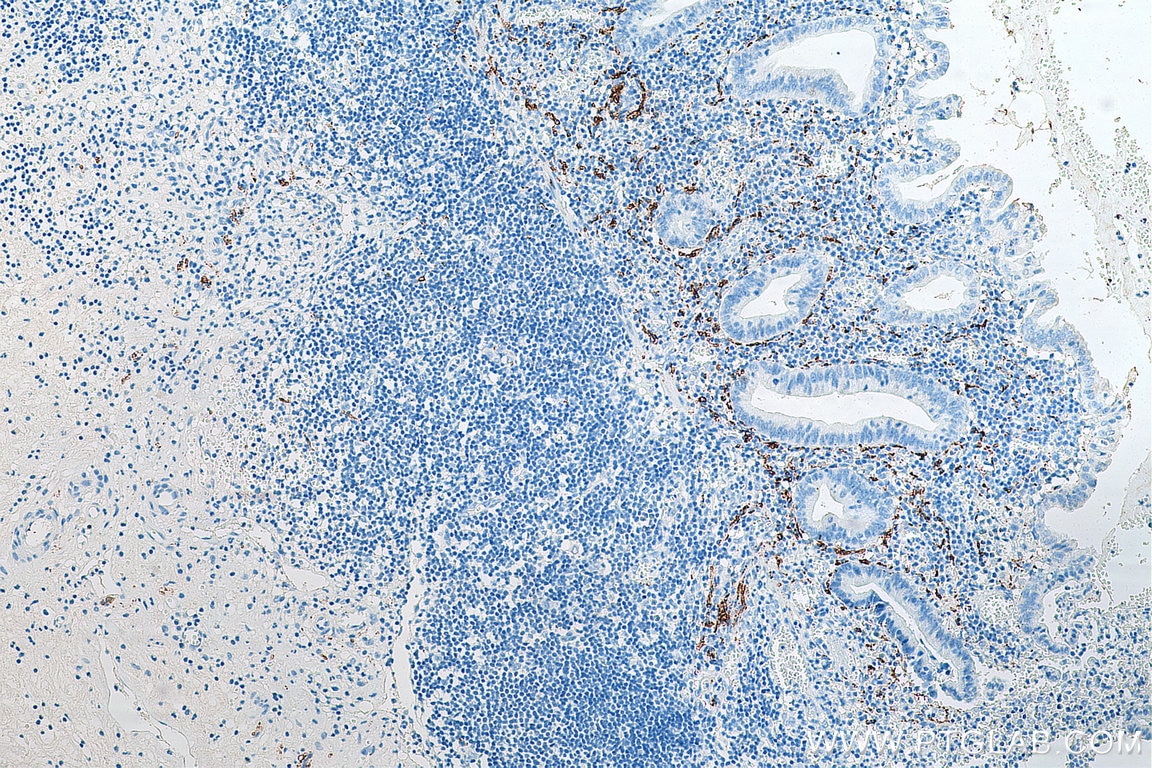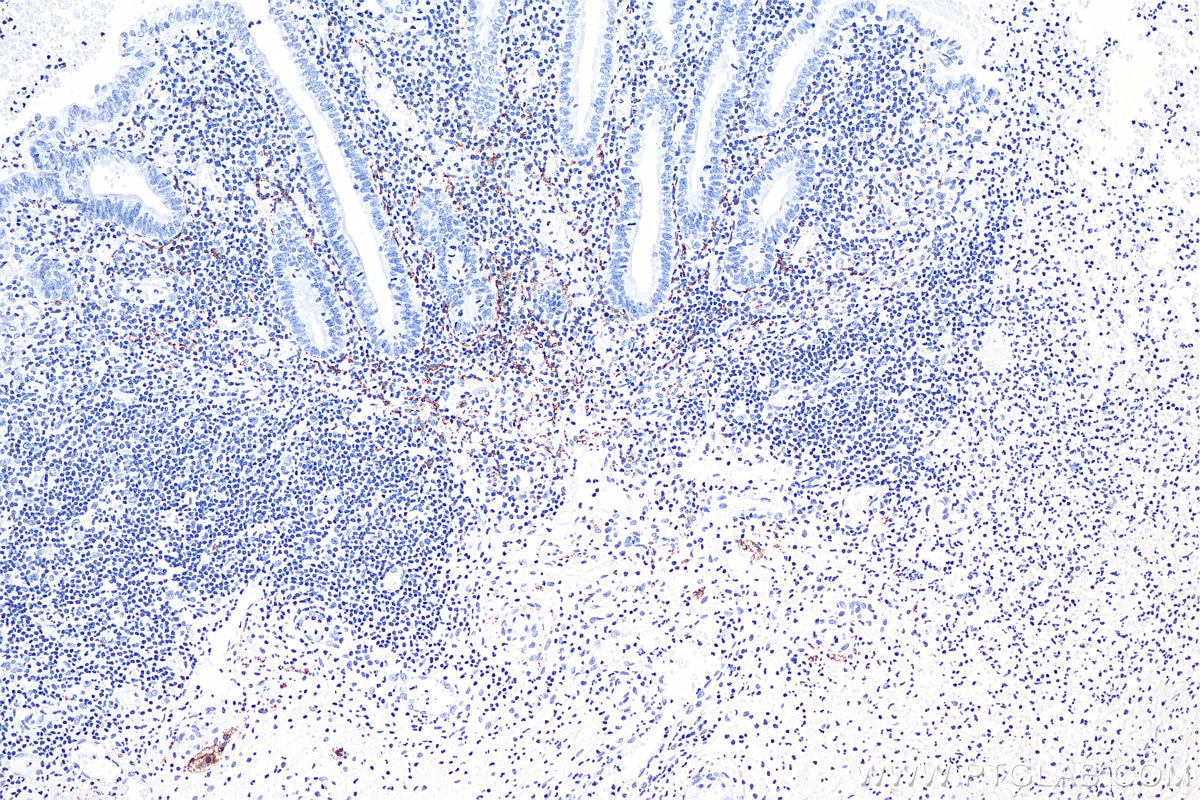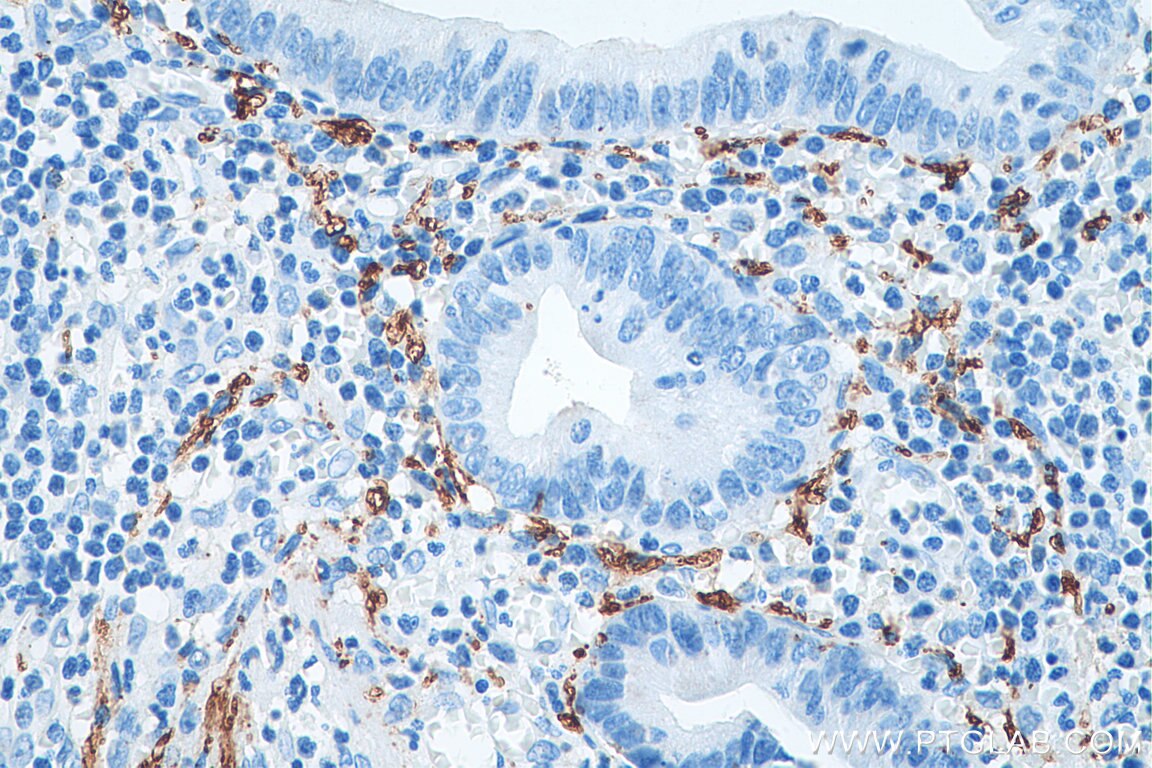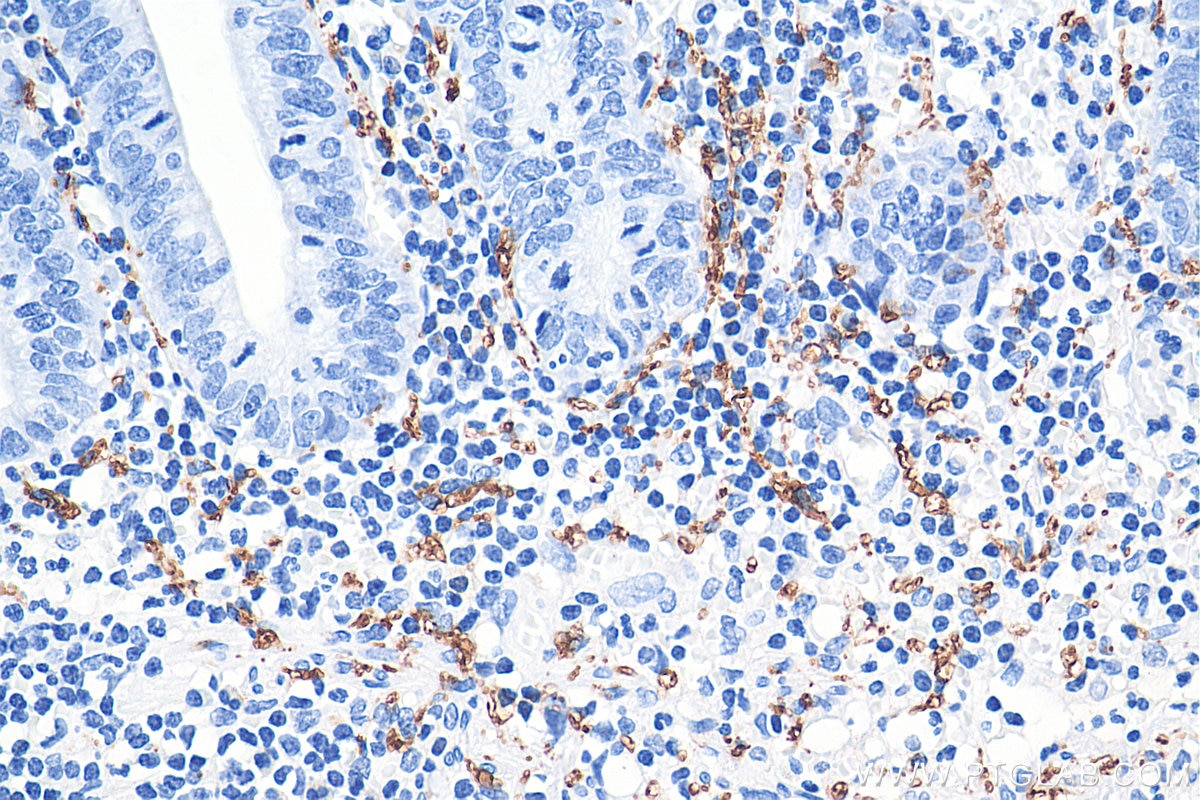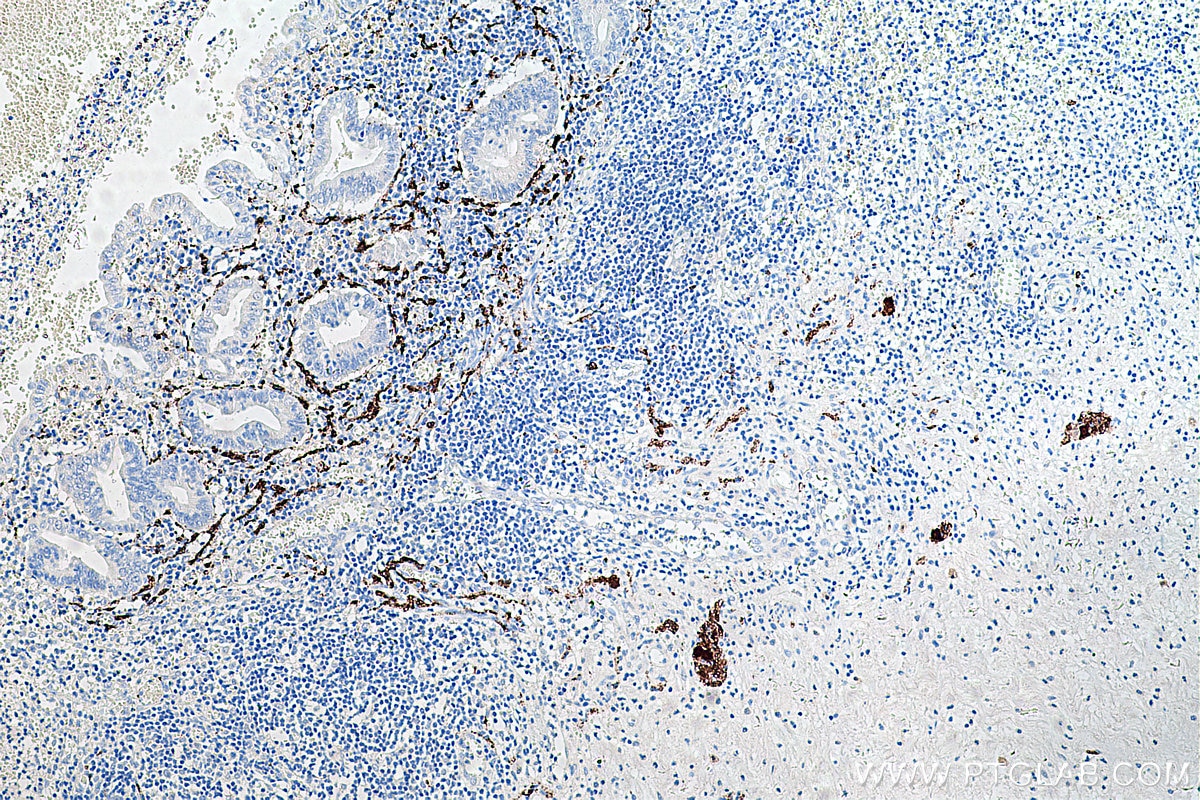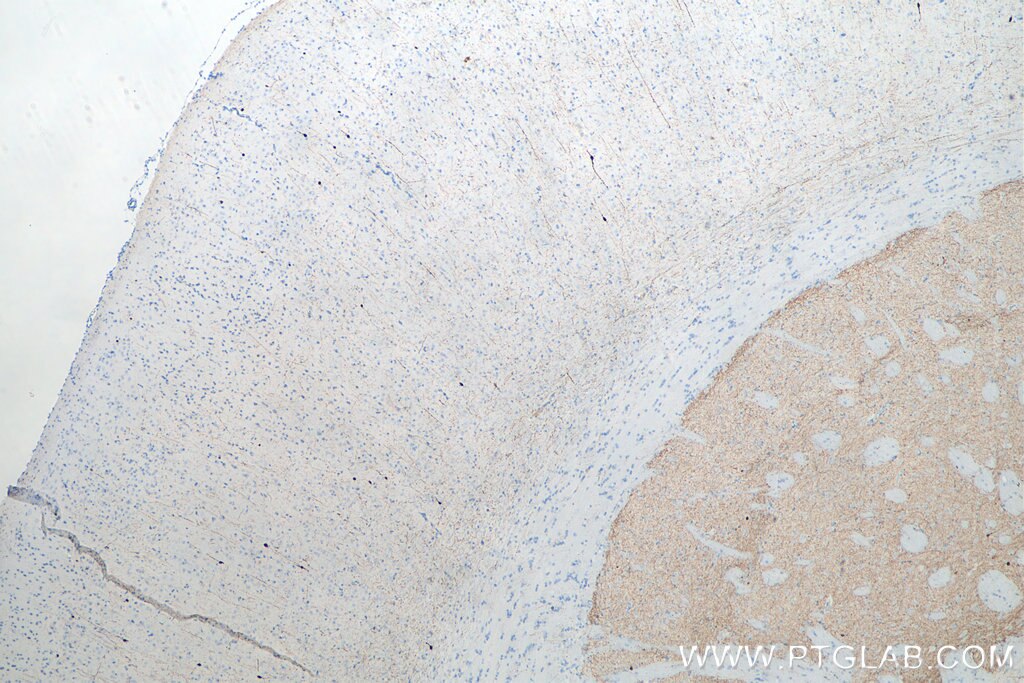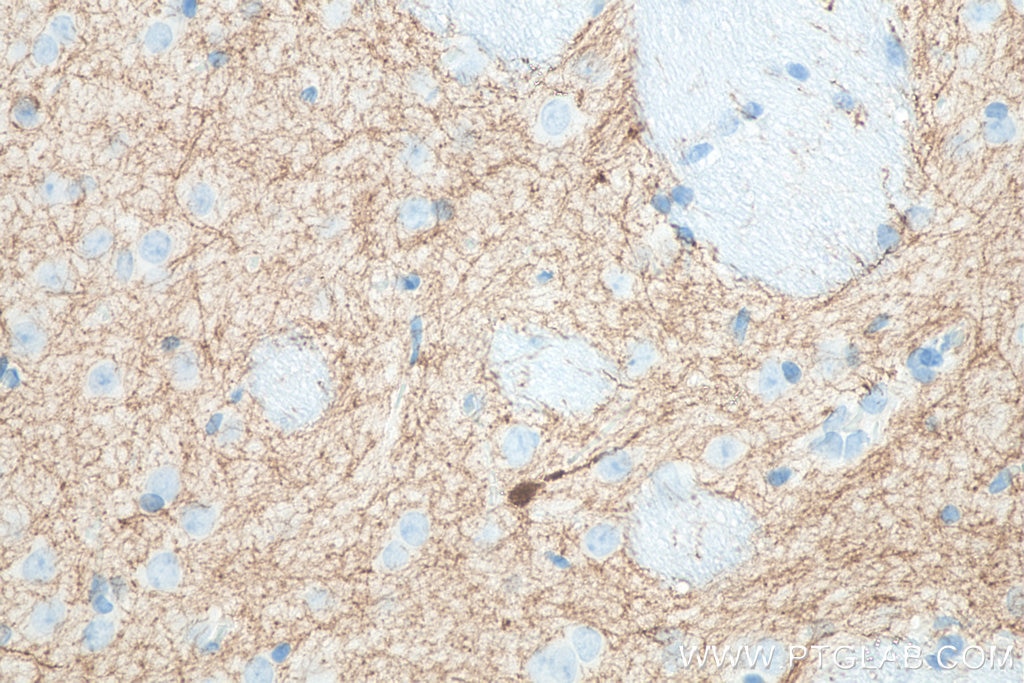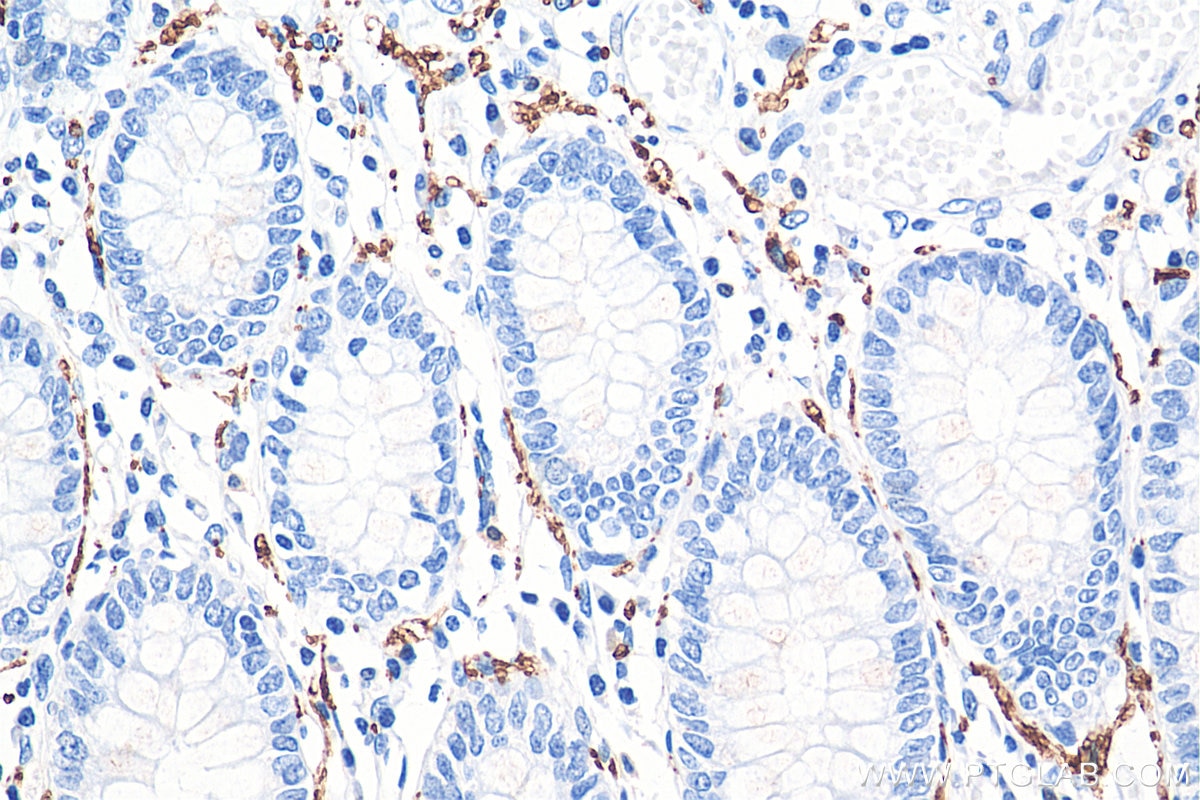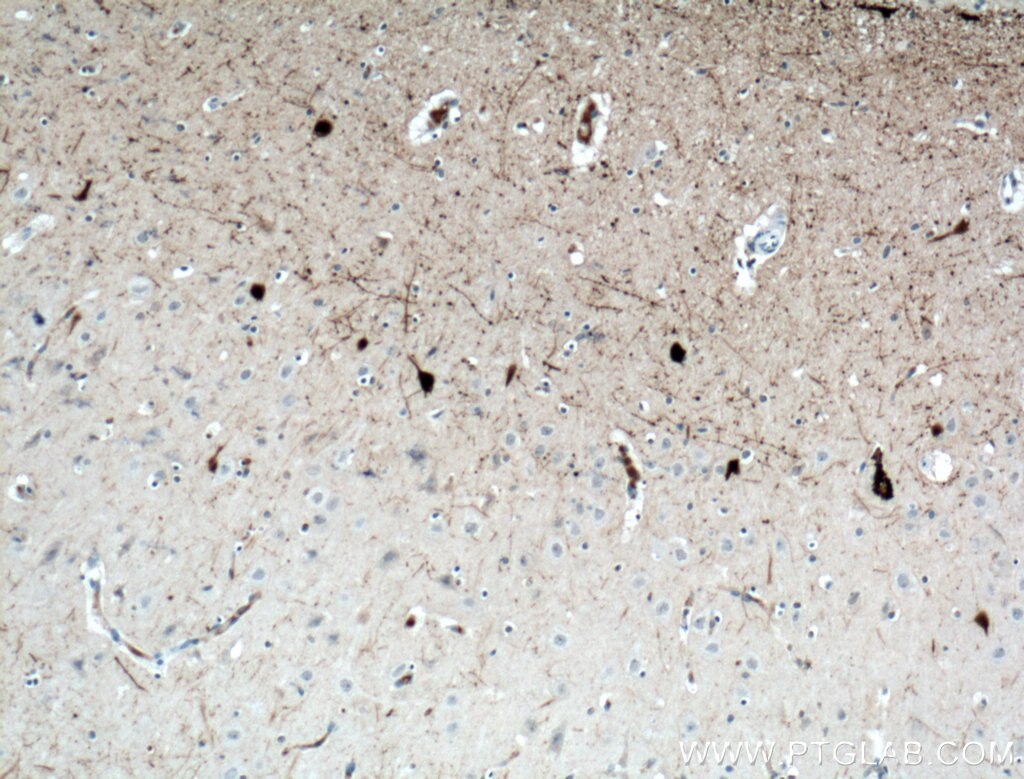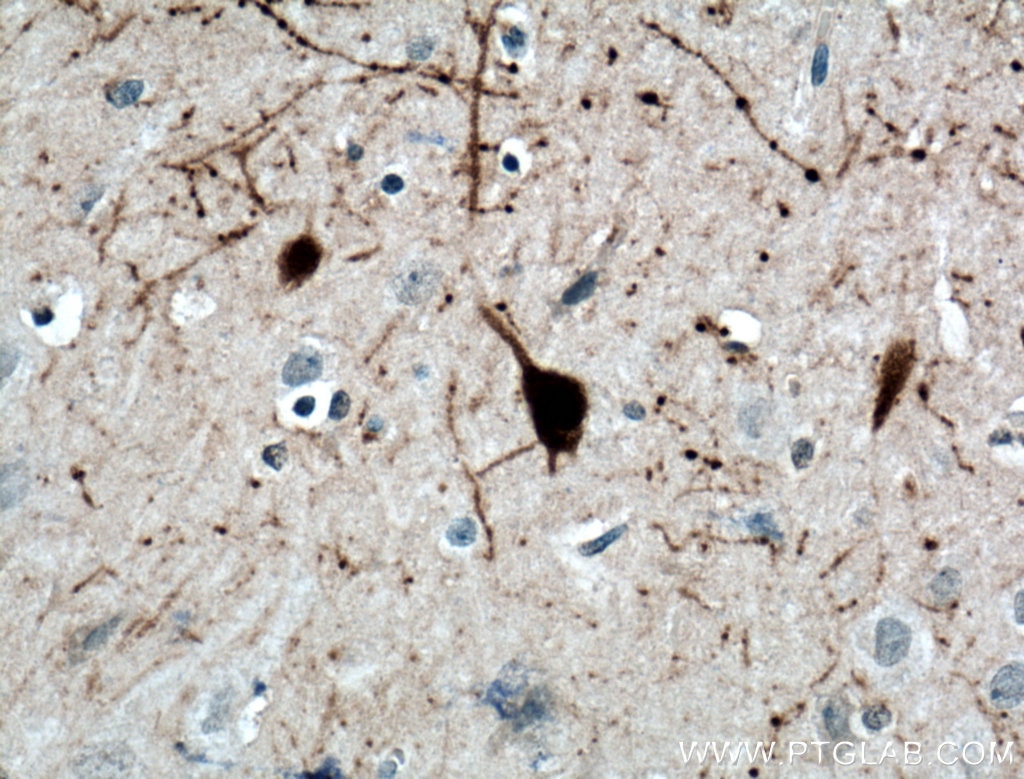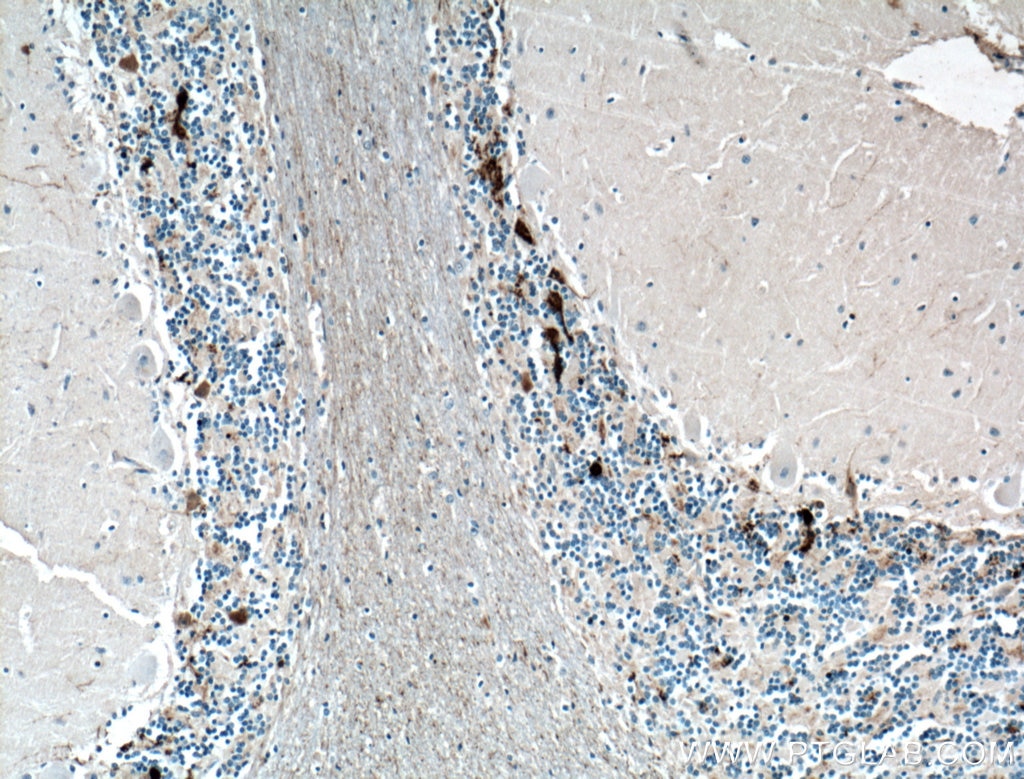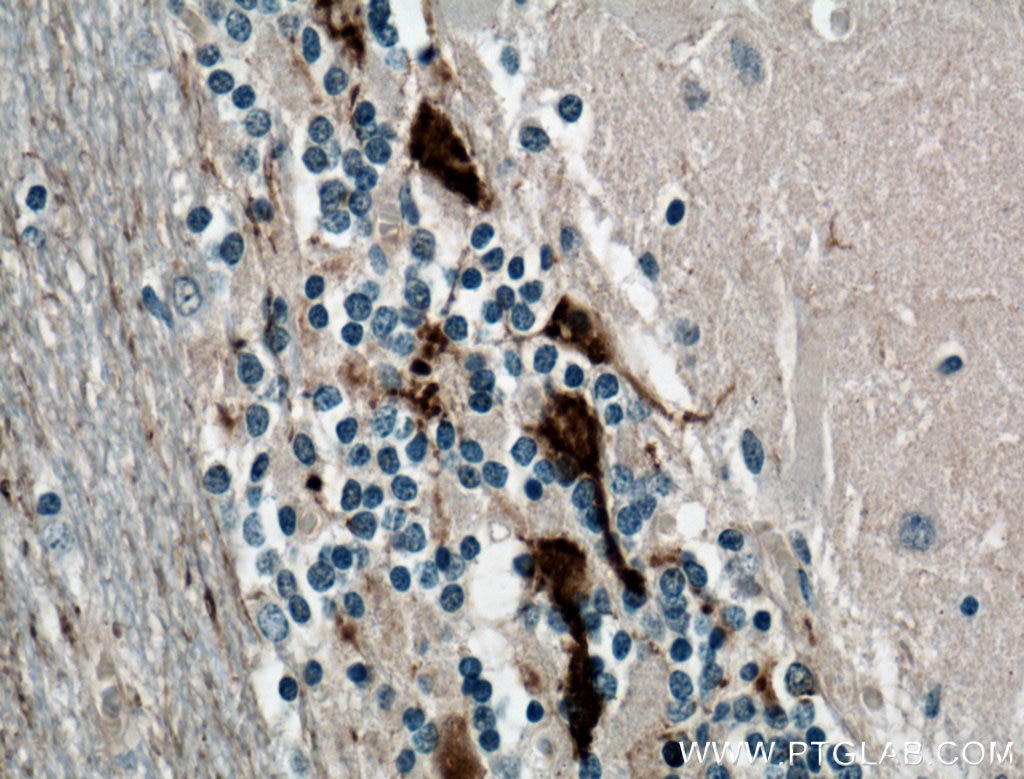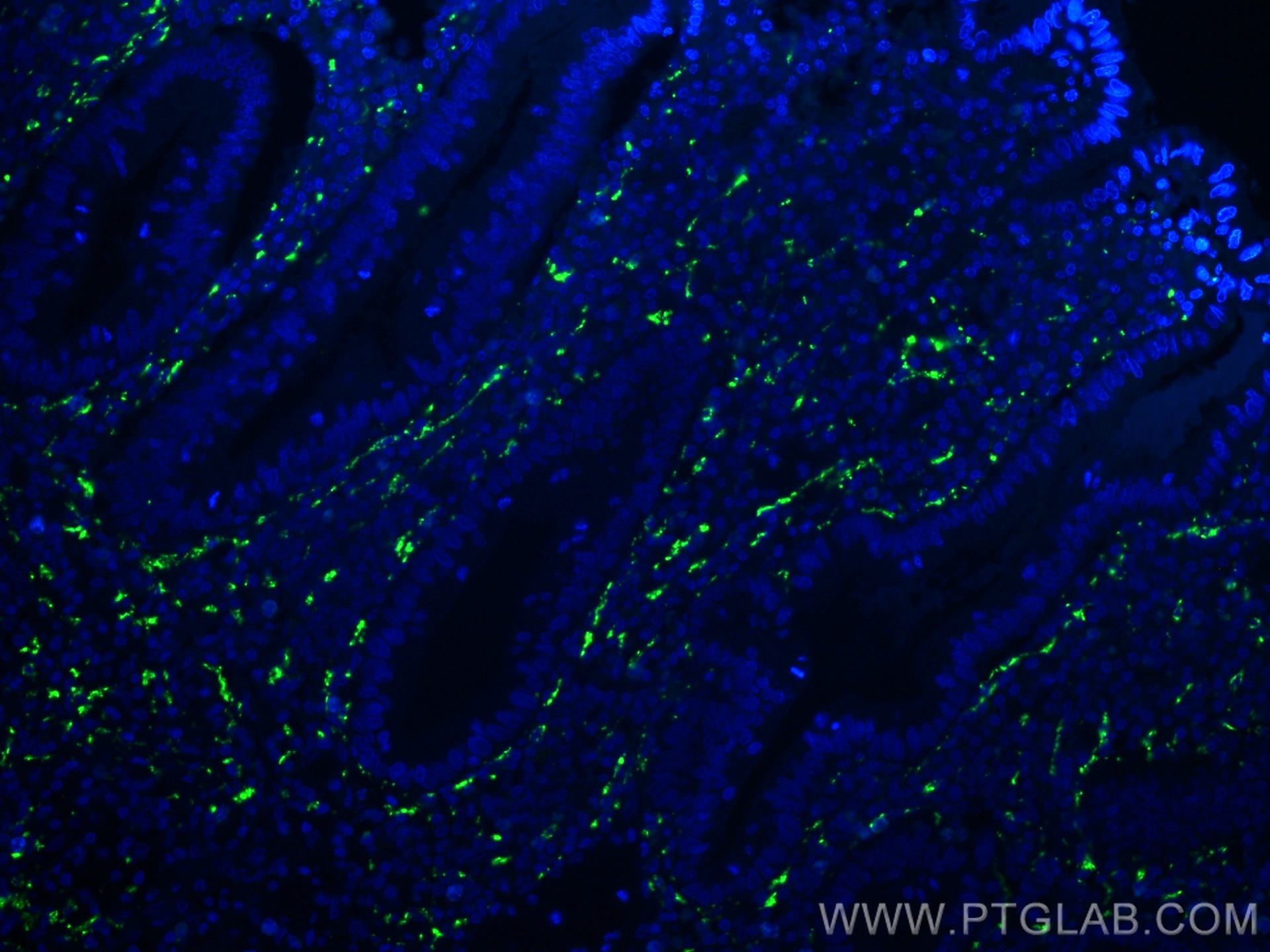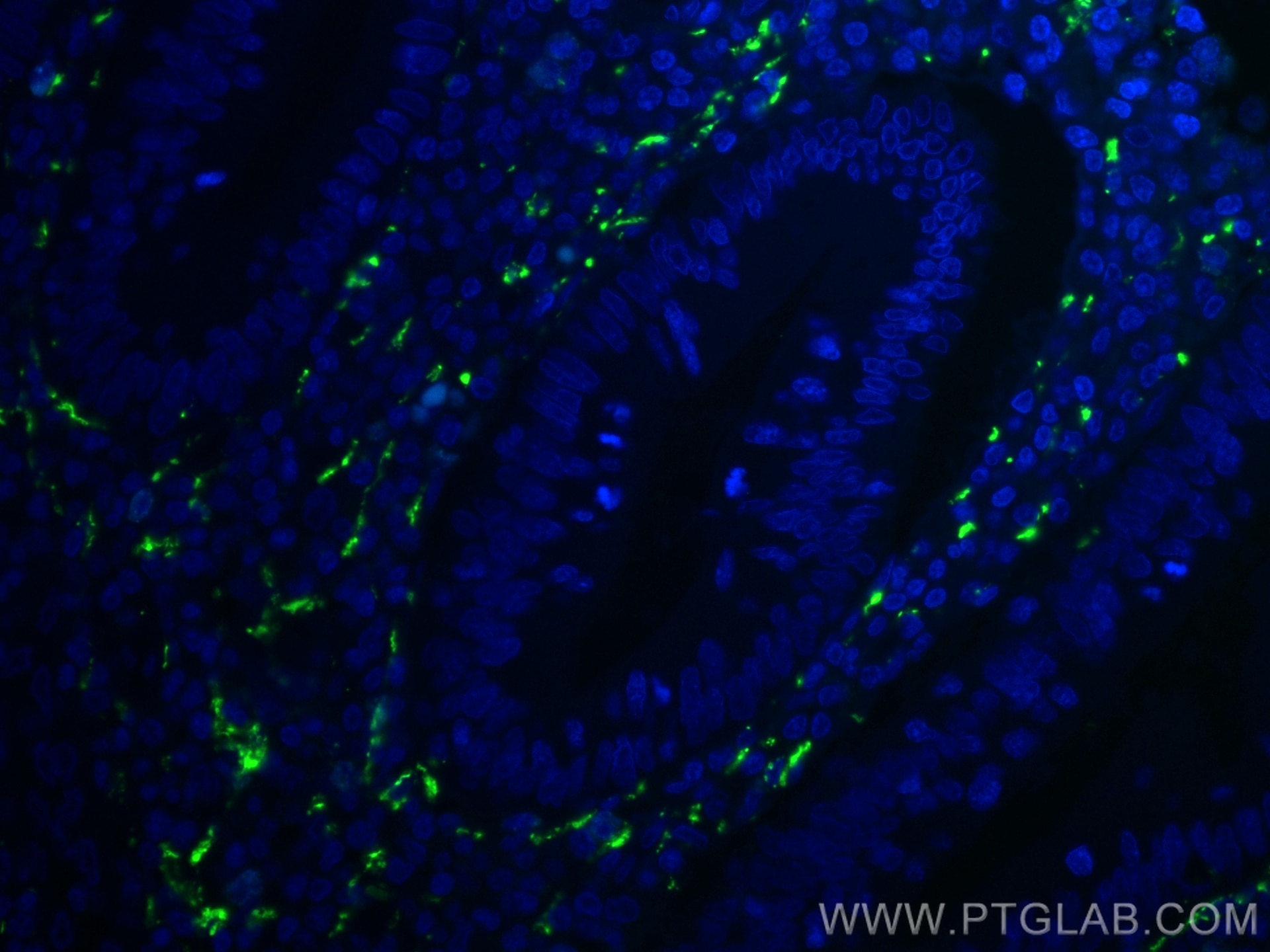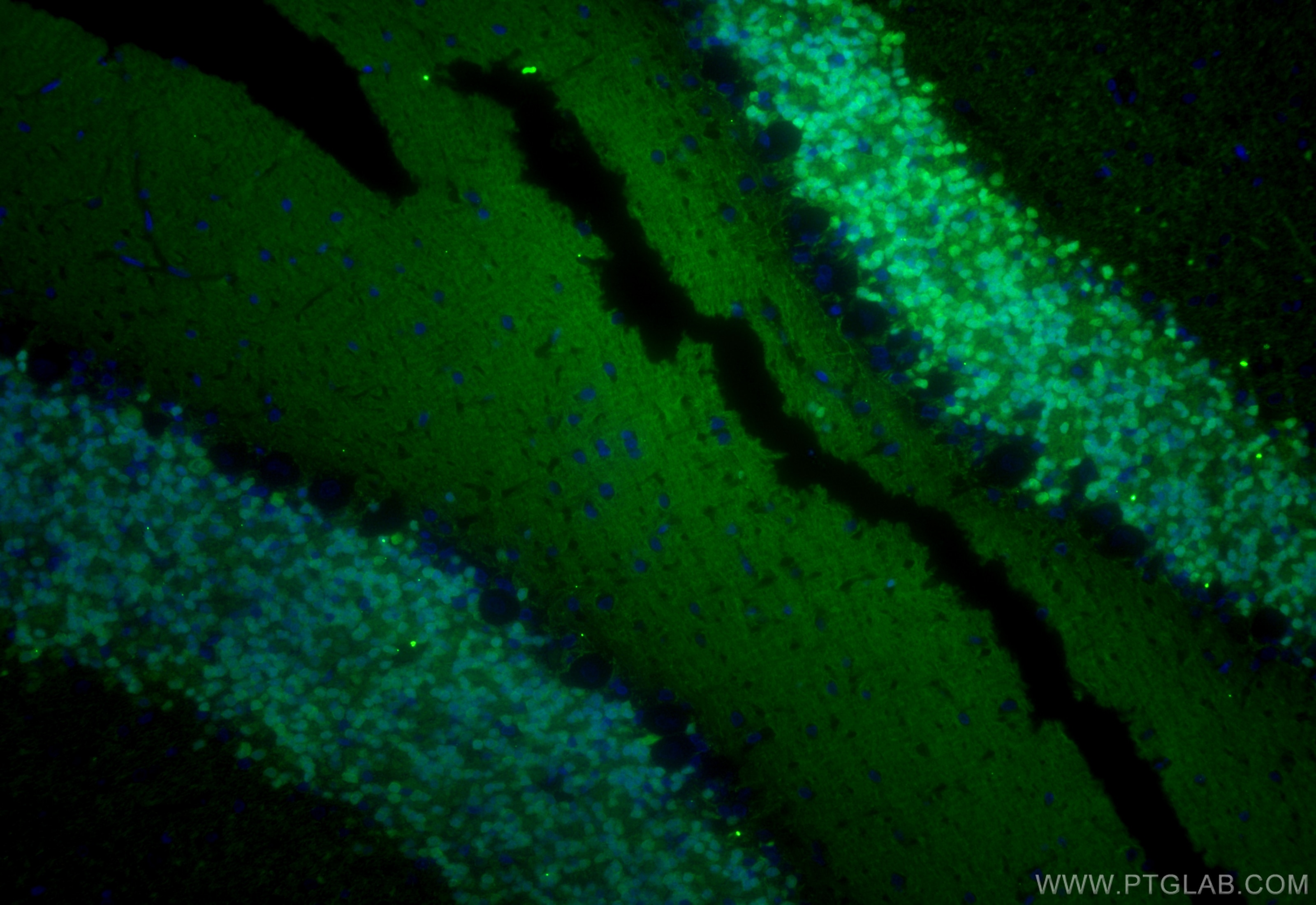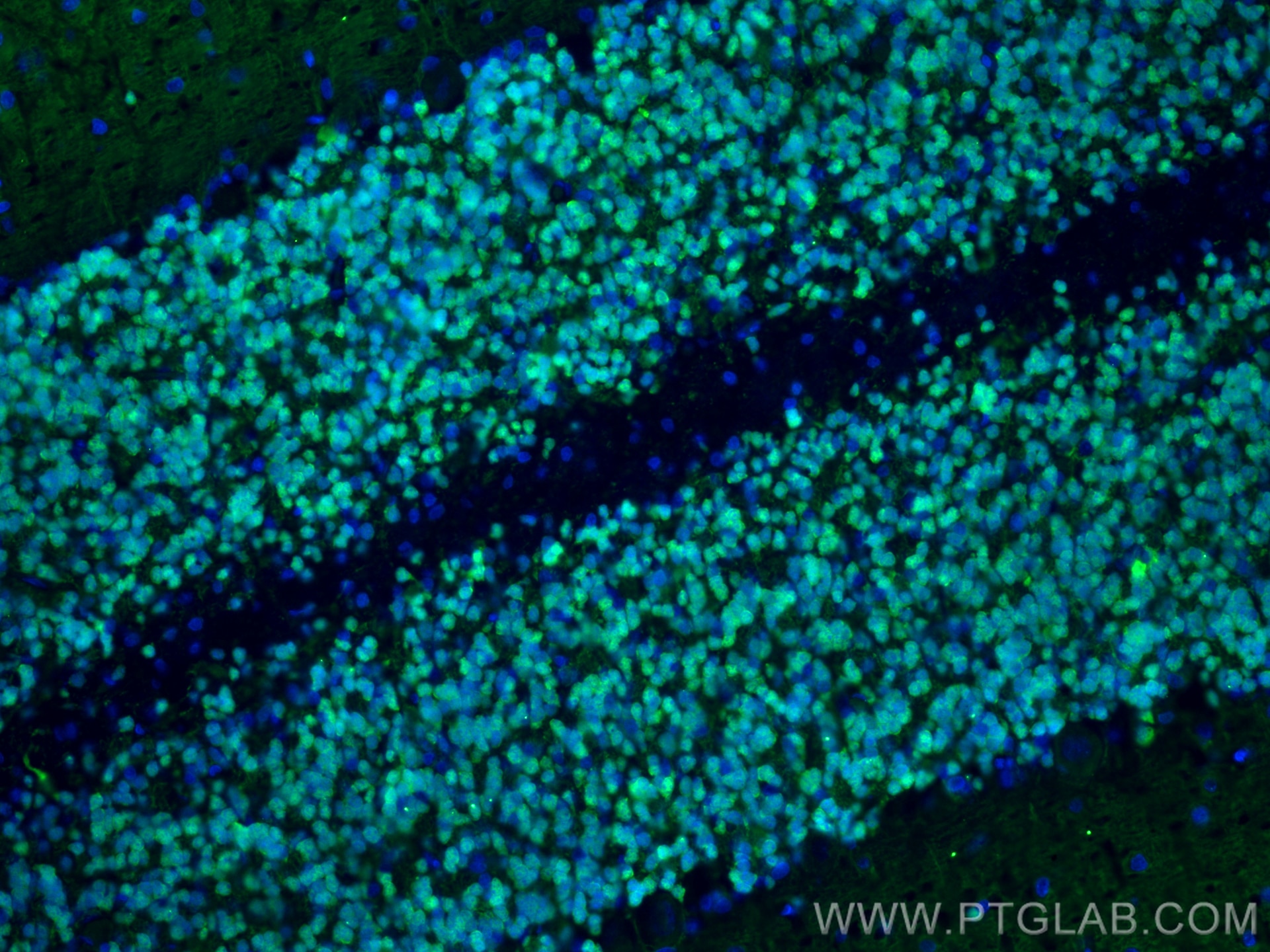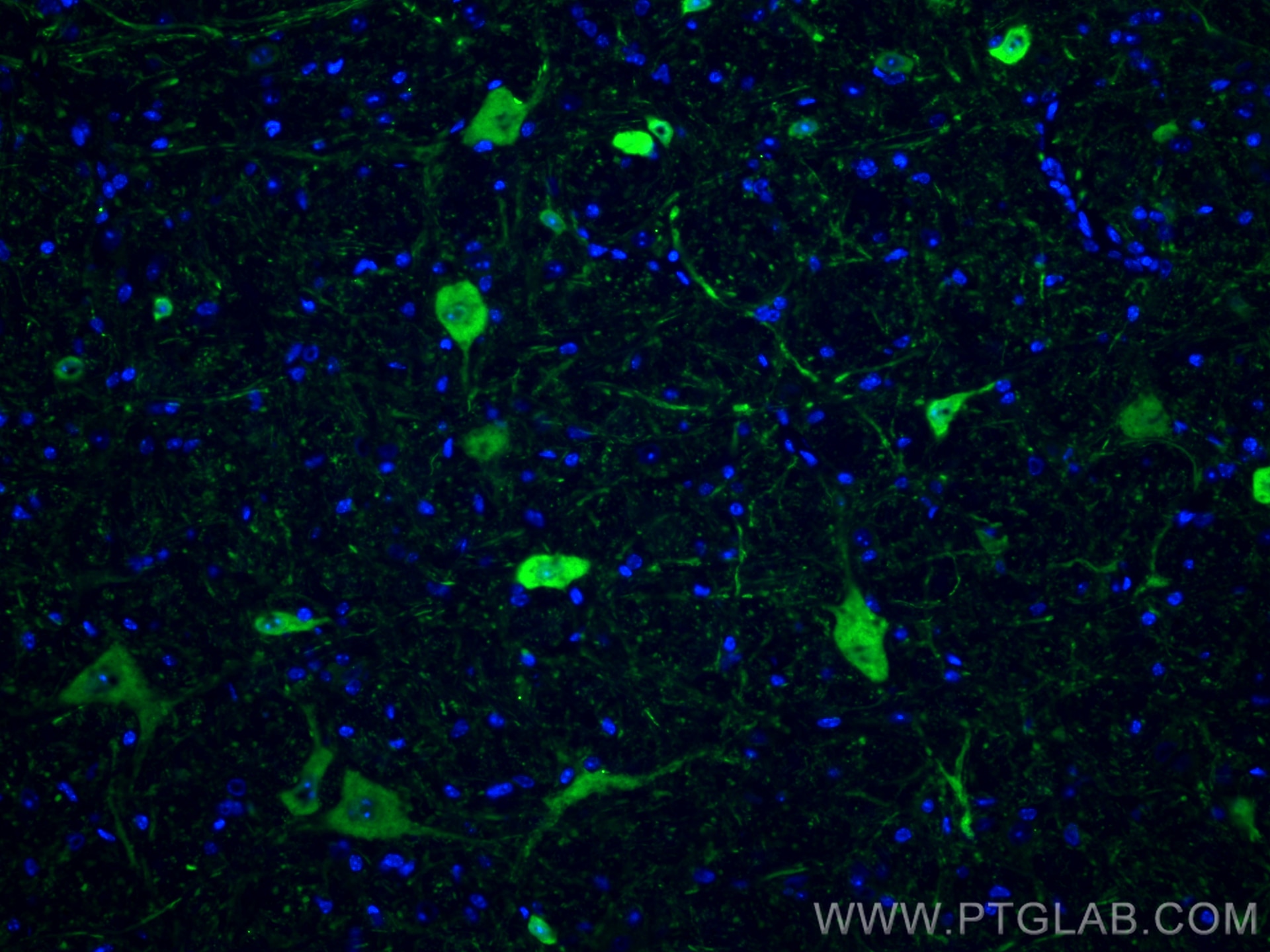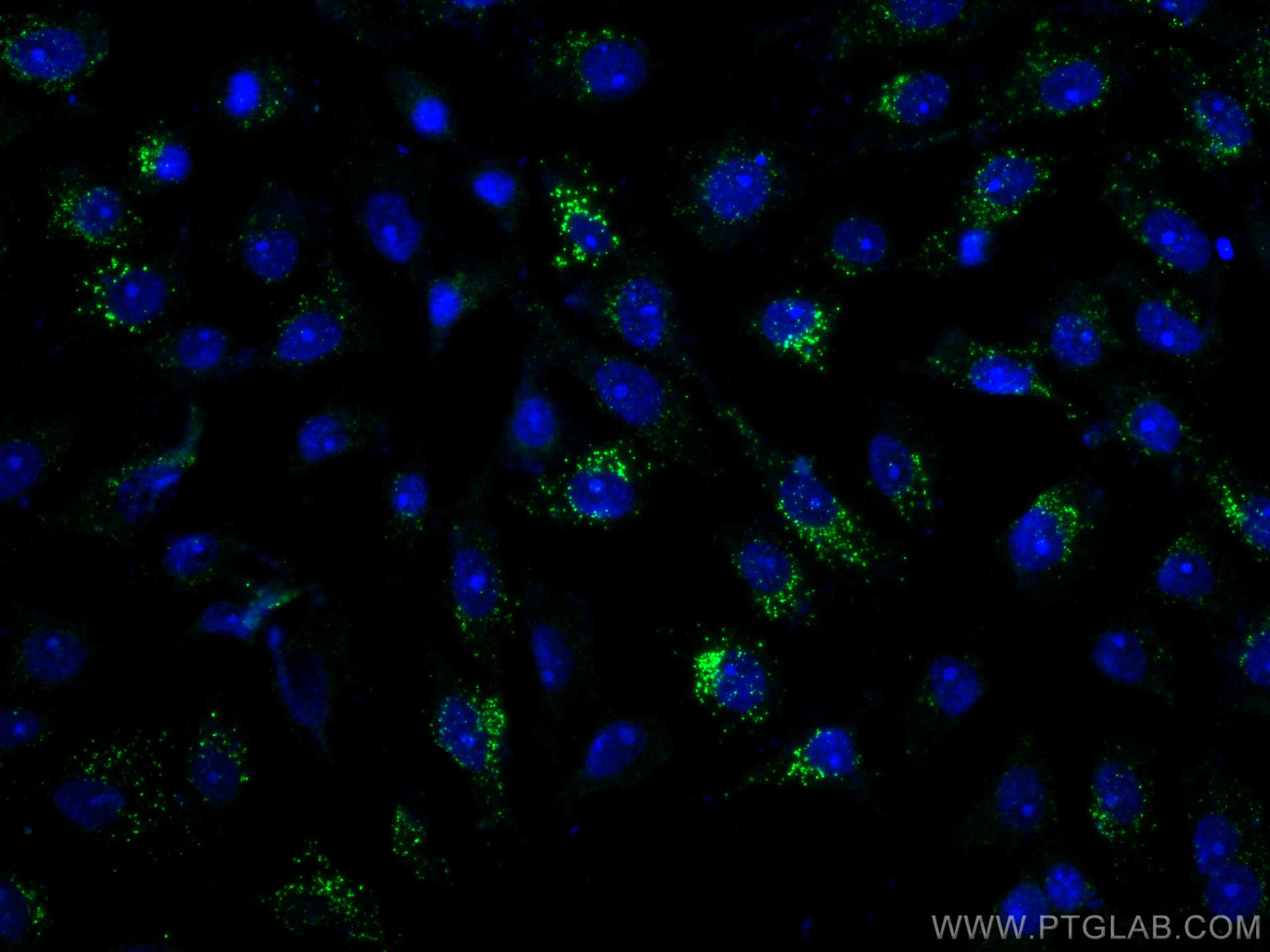Calretinin Monoklonaler Antikörper
Calretinin Monoklonal Antikörper für WB, IHC, IF/ICC, IF-P, IF-Fro, ELISA
Wirt / Isotyp
Maus / IgG1
Getestete Reaktivität
Hausschwein, human, Maus, Ratte
Anwendung
WB, IHC, IF/ICC, IF-P, IF-Fro, ELISA
Konjugation
Unkonjugiert
CloneNo.
2D7A9
Kat-Nr. : 66496-1-Ig
Synonyme
Geprüfte Anwendungen
| Erfolgreiche Detektion in WB | Hausschwein-Hirngewebe, Maushirngewebe, Maus-Cerebellum-Gewebe, Kaninchenhirngewebe, Rattenhirngewebe, Ratten-Cerebellum-Gewebe, U-251-Zellen, U2OS-Zellen |
| Erfolgreiche Detektion in IHC | humanes Appendizitis-Gewebe, humanes Hirngewebe, humanes Cerebellum-Gewebe, humanes Kolongewebe, Rattenhirngewebe Hinweis: Antigendemaskierung mit TE-Puffer pH 9,0 empfohlen. (*) Wahlweise kann die Antigendemaskierung auch mit Citratpuffer pH 6,0 erfolgen. |
| Erfolgreiche Detektion in IF-P | humanes Appendizitis-Gewebe, Ratten-Cerebellum-Gewebe |
| Erfolgreiche Detektion in IF-Fro | Maus-Cerebellum-Gewebe, Ratten-Cerebellum-Gewebe |
| Erfolgreiche Detektion in IF/ICC | SH-SY5Y-Zellen |
Empfohlene Verdünnung
| Anwendung | Verdünnung |
|---|---|
| Western Blot (WB) | WB : 1:5000-1:50000 |
| Immunhistochemie (IHC) | IHC : 1:2000-1:8000 |
| Immunfluoreszenz (IF)-P | IF-P : 1:200-1:800 |
| Immunfluoreszenz (IF)-FRO | IF-FRO : 1:400-1:1600 |
| Immunfluoreszenz (IF)/ICC | IF/ICC : 1:200-1:800 |
| It is recommended that this reagent should be titrated in each testing system to obtain optimal results. | |
| Sample-dependent, check data in validation data gallery | |
Veröffentlichte Anwendungen
| WB | See 3 publications below |
| IHC | See 2 publications below |
| IF | See 8 publications below |
Produktinformation
66496-1-Ig bindet in WB, IHC, IF/ICC, IF-P, IF-Fro, ELISA Calretinin und zeigt Reaktivität mit Hausschwein, human, Maus, Ratten
| Getestete Reaktivität | Hausschwein, human, Maus, Ratte |
| In Publikationen genannte Reaktivität | human, Maus |
| Wirt / Isotyp | Maus / IgG1 |
| Klonalität | Monoklonal |
| Typ | Antikörper |
| Immunogen | Calretinin fusion protein Ag2924 |
| Vollständiger Name | calbindin 2 |
| Berechnetes Molekulargewicht | 29 kDa |
| Beobachtetes Molekulargewicht | 29 kDa |
| GenBank-Zugangsnummer | BC015484 |
| Gene symbol | Calretinin |
| Gene ID (NCBI) | 794 |
| Konjugation | Unkonjugiert |
| Form | Liquid |
| Reinigungsmethode | Protein-G-Reinigung |
| Lagerungspuffer | PBS with 0.02% sodium azide and 50% glycerol |
| Lagerungsbedingungen | Bei -20°C lagern. Nach dem Versand ein Jahr lang stabil Aliquotieren ist bei -20oC Lagerung nicht notwendig. 20ul Größen enthalten 0,1% BSA. |
Hintergrundinformationen
Calbindin 2 (calretinin), is an intracellular calcium-binding protein belonging to the troponin C superfamily. Members of this protein family have six EF-hand domains which bind calcium. This protein plays a role in diverse cellular functions, including message targeting and intracellular calcium buffering. It also functions as a modulator of neuronal excitability, and is a diagnostic marker for some human diseases, including Hirschsprung disease and some cancers. Calretinin is a useful marker for differentiating malignant mesothelioma from carcinomas.
Protokolle
| PRODUKTSPEZIFISCHE PROTOKOLLE | |
|---|---|
| WB protocol for Calretinin antibody 66496-1-Ig | Protokoll herunterladen |
| IHC protocol for Calretinin antibody 66496-1-Ig | Protokoll herunterladenl |
| IF protocol for Calretinin antibody 66496-1-Ig | Protokoll herunterladen |
| STANDARD-PROTOKOLLE | |
|---|---|
| Klicken Sie hier, um unsere Standardprotokolle anzuzeigen |
Publikationen
| Species | Application | Title |
|---|---|---|
Cell Glia-to-Neuron Conversion by CRISPR-CasRx Alleviates Symptoms of Neurological Disease in Mice. | ||
Acta Neuropathol Commun TMEM106B deficiency impairs cerebellar myelination and synaptic integrity with Purkinje cell loss. | ||
Neurobiol Dis Sex specific correlation between GABAergic disruption in the dorsal hippocampus and flurothyl seizure susceptibility after neonatal hypoxic-ischemic brain injury. | ||
Neurobiol Dis Cytohesin-2 mediates group I metabotropic glutamate receptor-dependent mechanical allodynia through the activation of ADP ribosylation factor 6 in the spinal cord. | ||
J Cancer A Prognostic Model of Angiogenesis and Neutrophil Extracellular Traps Related Genes Manipulating Tumor Microenvironment in Colon Cancer | ||
Rezensionen
The reviews below have been submitted by verified Proteintech customers who received an incentive for providing their feedback.
FH Reyes (Verified Customer) (09-05-2024) | Calretinin (green) worked magnificently on my human brain FFPE tissue marking some neurons (NeuN in red)
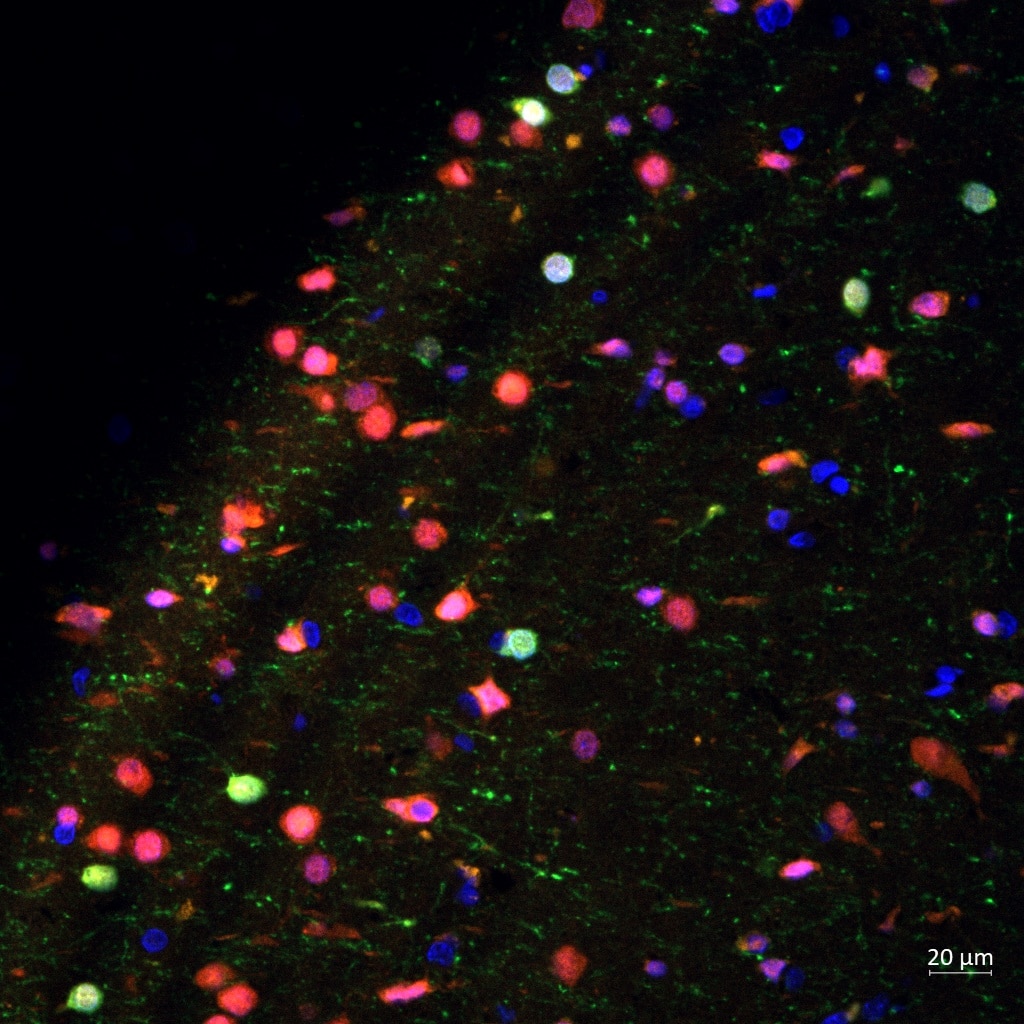 |
